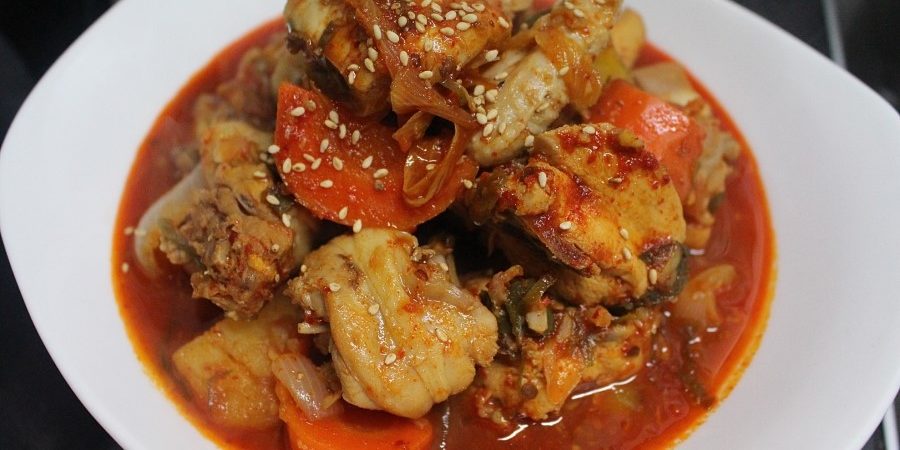Korean food is awash with varying shades of red, suggesting levels of spiciness tinged with the usual suspects of flavor: vinegary sharp at times and sometimes sweet, made exciting by the nutritional science behind each serving. Dakbokkeumtang is, for what it’s worth with the imagery, is a shocking red-orange in color and topped with a few greens in the form of leeks.
Dakbokkeumtang is a Korean stew directly translated as spicy braised chicken and had undergone a formal name change after an issue with a middle word thought to have been loaned. The ingredient equation here involves chicken boiled with vegetables such as potatoes and carrots and then adding in the pillars of Korean spices, the gochugaru and gochujang. When time permits the ingredients are stir-fried before boiling.
Coated in red, this Korean dish varies across the country – getting either the jjim treatment or the jorim. Respectively, these two are translated as boiling and steaming. For the uninitiated in Korean spicy dishes, changes may be made with the measurements prescribed for gochugaru and gochujang and can instead add on soy sauce and sugar as alternatives. However, retain a modest amount of gochujang and gochugaru as a Korean meal won’t be complete without these reps.
*photo source: https://blog.naver.com/parkyang1021/220417020502
Another delicious Korean dish: https://thisiskoreatours.com/bulgogi-korean-food/








1 Comment